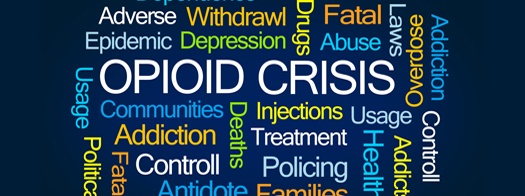
We have shined the spotlight on the wanton prescribing of opioid pain killers by the medical profession as the primary cause of the addiction of housewives, mothers, teachers, students, and otherwise honorable citizens from every walk of life.
We have traced the spread of this plague from the hard core inner cities to the suburbs and small towns of every state. No portion of our society has been spared.
In the June 14th issue of Nonprofit Quarterly, Anna Berry reported that according to the U.S. Center for Disease Control and Prevention heroin use in the Northeast more than doubled among young adults over the past decade, and 45% of heroin users were also addicted to prescription opioid painkillers. Since 2010, heroin overdose death rates have more than quadrupled. In little Nashua, New Hampshire, Police Chief Andrew Lavoie reported 332 overdoses and 44 drug fatalities in 2016.
Nonprofits in the Northeast like Harbor Homes in Nashua are trying to establish Safe Station programs that provide places for addicts to safely get connected to helpful resources. However, Harbor Homes is struggling to find adequate funding to continue the Safe Station program. HOPE for New Hampshire Recovery has expanded from a single modest space in Manchester to seven drug recovery centers statewide but is currently mired in an administrative scandal that they claim was trumped up to denigrate them in an effort to deny funding for the work that they do.
In Boston, Anna Berry reports, the establishment of safe injection sites for opioid addicts remains controversial. “The solution to drug addiction by having a safe place to shoot drugs is not the response,” Boston’s Mayor said. “The response is funding (recovery) programs…come up with creative solutions on how we can come up with ways of getting people into recovery.”
These tepid responses to nonprofit safe station programs in both New Hampshire and Massachusetts reveal an unwillingness on the part of state officials to recognize the reality of heroin addiction. Even the Massachusetts Medical Association has urged the state to open safe station pilot facilities. “This is not a new idea; nine other countries have places where people can even use illegal drugs under the guidance of a nurse or other medical professional. Those spots are known as supervised injection facilities, or SIFs. A relatively large body of research about such facilities indicates that SIFs reduce overdoses and facilitate the use of treatment options.”
I asked a social worker friend of mine in Boston why the officials in the Northeast seem reluctant to support safe station programs. “The problem is denial. Most of the people in this part of the country are traditional church-going folk. They find it hard to look at their neighbors and friends as heroin addicts. It’s understandable but regrettable. They have got to face up to this epidemic and offer these innocent victims sympathy and understanding. They must not turn away from the reality of this heroin epidemic that has infected their neighbors. Too many people will die.”

